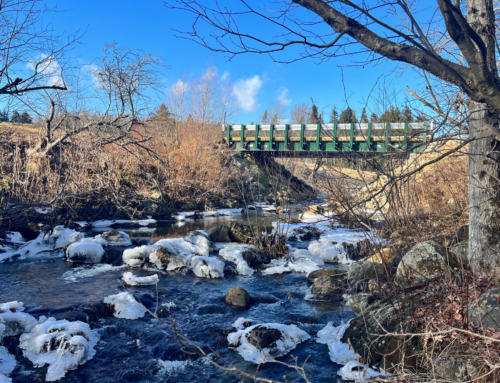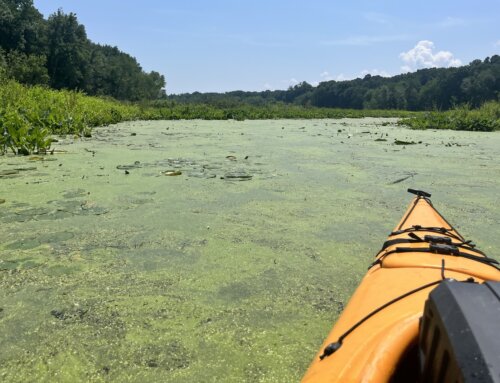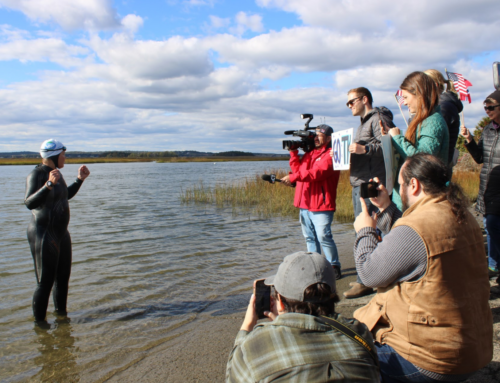My first day on the job as Connecticut River Conservancy’s newest River Steward was a whirlwind — literally. We got an early-morning start with our friends at the U.S. Fish & Wildlife Service for a windy trip up and down the Connecticut River on their airboat. As we sailed past boathouses, paddlers and park-walkers, the reasons why I accepted my new job became tangible. Simply put, the Connecticut River is beautiful and enhances the lives of those who use it and live within its valley.
My reverie; however, was short-lived. At our first stop, I hopped out of the boat and came across countless plastic bottles and nips along the shoreline. I repeated this experience a few weeks later during our Source to Sea Cleanup when I was out with volunteers, again picking up more plastic beverage containers than I ever thought possible.
In 2019, and in just a few hours of cleaning, volunteers removed over 5,000 beverage containers clogging the rivers and streams in the Connecticut River Valley. Plastic bottles and beverage containers are far and away the most common items we find polluting our waterways, and it’s not just the Connecticut River — the Ocean Conservancy classifies plastic bottles as one of the top ten items most commonly found littering Connecticut trash cleanups. In 2019, in Connecticut the Ocean Conservancy tallied over 10 thousand beverage containers overall.
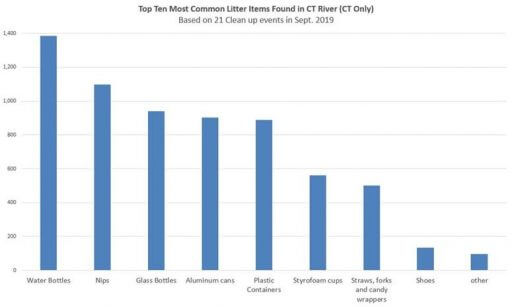

To add insult to injury, many of these beverage containers are too contaminated to recycle and end up in landfills and incinerators.
The good news is Connecticut knows how to solve this problem. Connecticut is one of ten U.S. states with a deposit return law (more commonly known as a “bottle bill”) that incentivizes consumers to recycle by placing a deposit on cans and bottles. On average, states with bottle bills collect for recycling almost three times as many cans and bottles[1] as states without.
The problem is, Connecticut has the lowest redemption rate in the country (the number of containers that are redeemed to be recycled). When Oregon increased its deposit from five to ten cents, redemption rates skyrocketed to 90%, a 26% increase in two years.
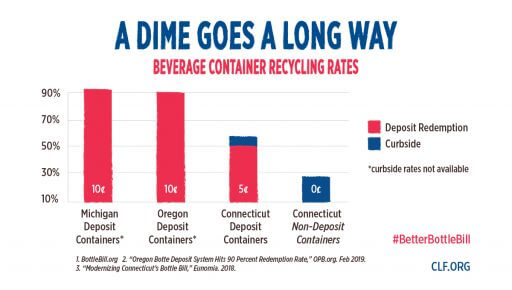
Connecticut’s law also does not include beverages that have grown in popularity since the law was passed in 1978 like Gatorade. A Connecticut Bottle Bill that increases the deposit to ten cents, expands the types of containers that can be redeemed and gives a raise to redemption centers is essential to reducing river pollution. Deposit return systems are dependent upon a network of redemption points so consumers can conveniently drop off their containers and get their money back. In CT, we drop off bottles at retailers or independent recycling centers (known as “redemption centers”). Each location is paid a small “handling fee” by the beverage producers for costs like storage and labor. But CT redemption centers are closing down rapidly because they have not had a raise for over thirty years.
2019 was the largest Source to Sea cleanup we have ever hosted at the Connecticut River Conservancy, with over 3,600 volunteers getting dirty for cleaner rivers in four states. It is my hope that our cleanups, rather than growing, become obsolete. The Connecticut River is beautiful and enhances the lives of those who use it and live within its valley; we must protect this resource. Let’s stop the trash before it starts — take action and call your legislator today to voice your support for the bottle bill (HB5154), sign up for action alerts, and follow the “CT Bottle Bill Works” Facebook page for updates.




